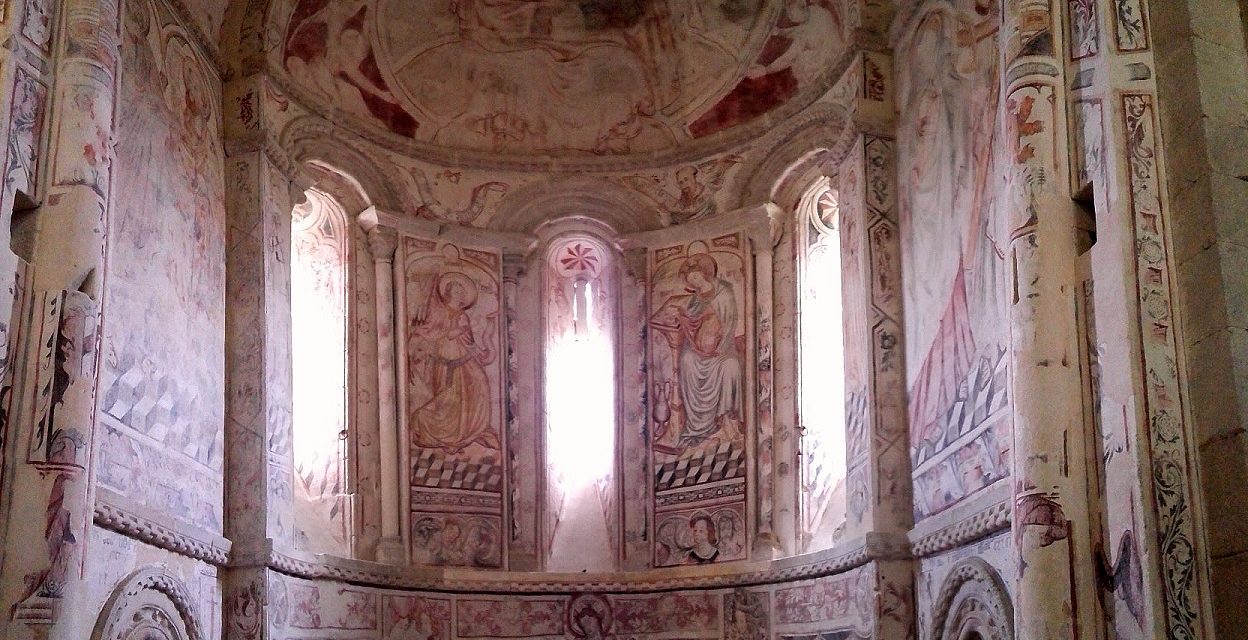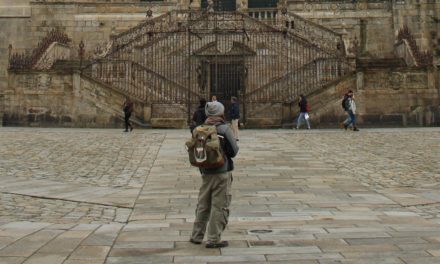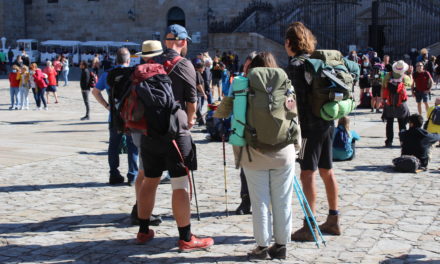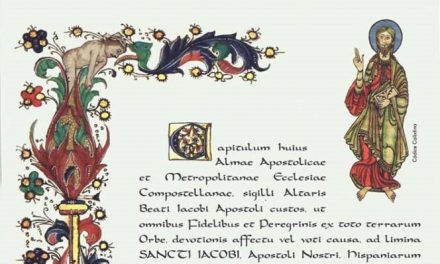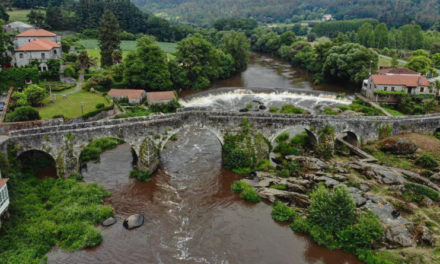Santa María de Vilar de Donas is perhaps one of the most unknown and beautiful spaces of the Camino. Located in the vicinity of Palas do Rei, it is well worth turning off from the Camino and walking the few hundred metres that it takes, to visit the treasure it contains. This is a cycle of fresco paintings whose very existence had been threaten by damp and neglect for decades, but have just been restored with excellent results.
Vilar de Donas was a priory of the Order of Santiago, dependent on its headquarters on the Camino de Santiago: San Marcos de León. Although its architecture is also worth a visit, since it is a jewel of Romanesque art, the paintings constitute a rare treasure that no pilgrim or tourist should miss. It is a cycle of Gothic paintings, executed by a workshop called International Gothic, a refined and courtly artistic style that flourished at the beginning of the XVth century and that arrived in Galicia very soon after.
The frescoes have numerous inscriptions that have allowed them to be dated from 1434, a Holy Year in which Compostela received thousands of pilgrims arriving from all corners of Europe, by land and by sea, in numerous ships from the British Isles and the Scandinavian Countries. We see that the Holy Years, then as now, were times of public works and investment. Thus demonstrating that there is nothing new under the sun, neither in the marketing and nor in investment in art that an influx of money makes possible.
The paintings mainly occupy the surface of the central apse and a baldachin, also Gothic. In the apse cycle, at the lower level, the image of Cristo Varón de Dores stands out, surrounded by paintings of the kings Juan II and María de Aragón and his son Henrique. On the upper level the subjects are the Virgin Mary and the Archangel Gabriel, which make up a beautiful Annunciation arranged around the window that illuminates the main altar.
Along with the pictorial cycle, what is also worthy of note are the several tombs of the Knights’ Order of Santiago of great artistic value, including that of Fernando Ares Noguerol.
The church can be visited between 12-18.40h from Tuesday to Sunday until October 15.

